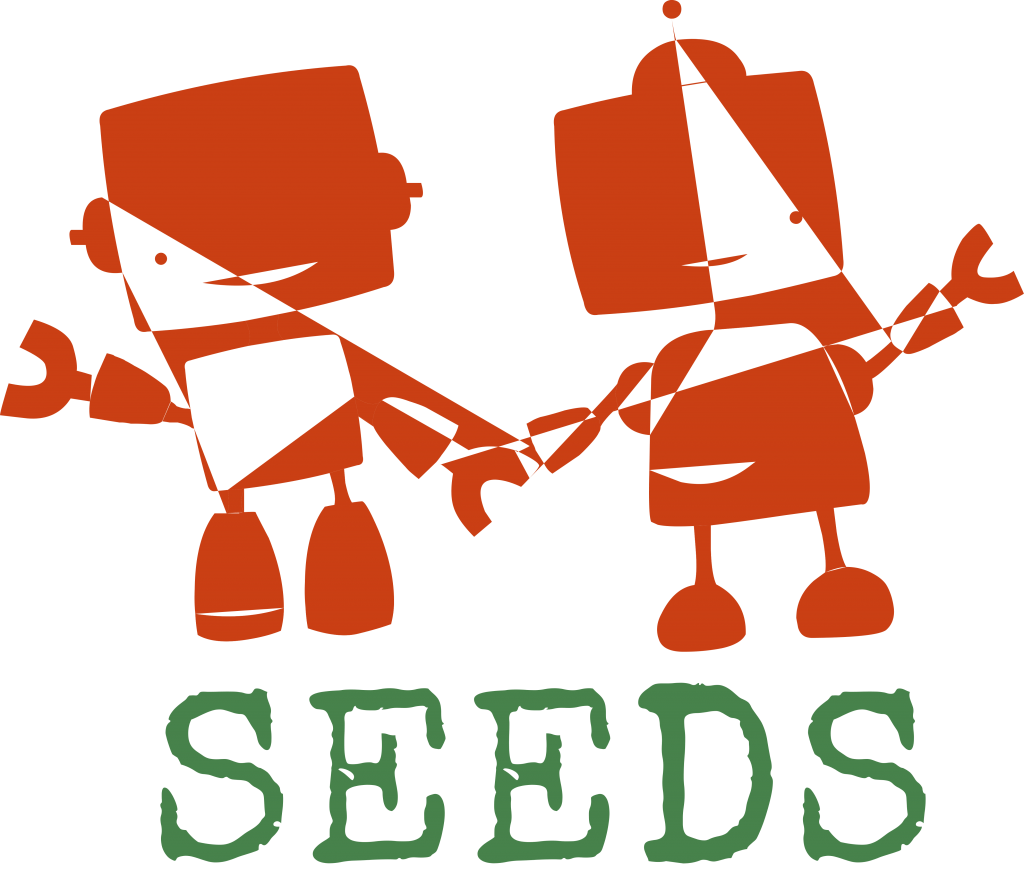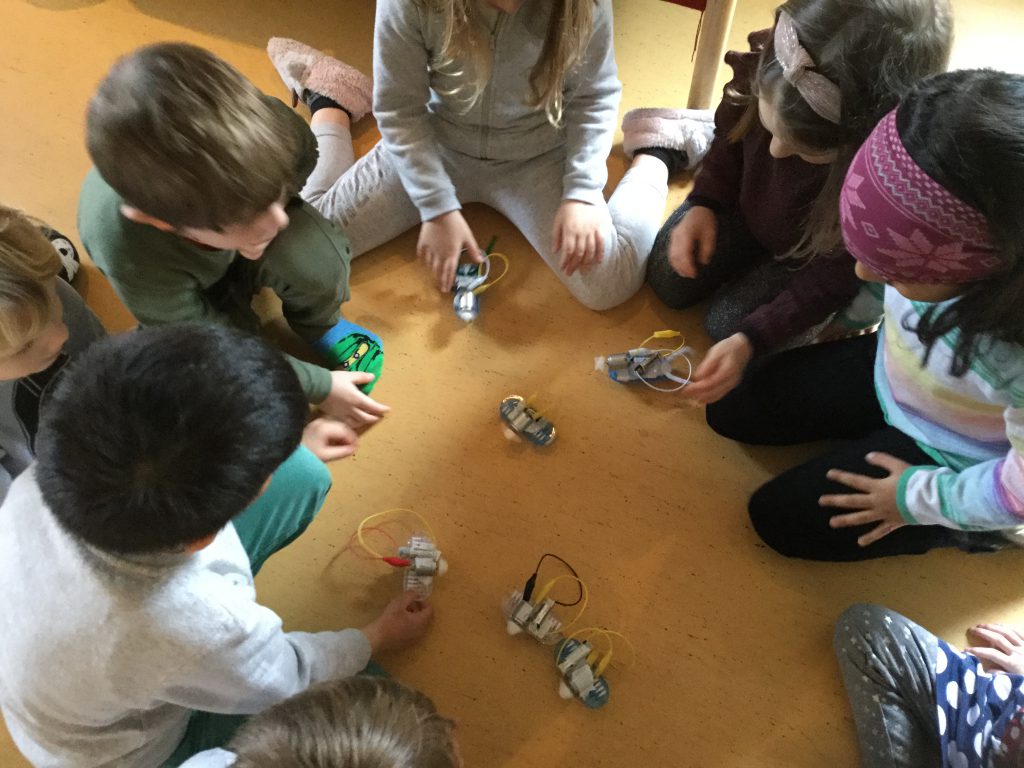


SEEDS Toolkit
The SEEDS toolkit it a set of resource materials that altogether allow for being creative using hands-on technology with children from the age of three to six years in a preschool context. It contains different sets of resource materials that allow for using different technologies, such as physical robots and electrical circuits.
Technology Approach in SEEDS
We think technology are both tablets and scissors. It is tools to tell stories or investigate a theme. It is not only digital technology like a robot or a mobile phone. It is not only analogue technologies like the well-used blue pencil or the white glue. It is both and it can all be used in the same process.
I draw something, take a picture of it and use the picture in a piece of software called Puppet Pals, where you can tell stories. We build a waste landscape in cardboard of the planets in the universe, let small robots drive around in it, take a video of it and upload it to the internet for others to be inspired to do their own universe.
In the SEEDS-project, we went all the way from Chatterpix, where you can make things talk in small videos over Bee-bots, where you can program a small robot to move around to a floor to paper mache, clay and glue to construct figures and landscapes. We even exchanged images and videos of stuff, we made, on the internet. When you play and construct, anything can be used and combined.
We are all still bodies in local spaces using all kind of technologies to understand our selves and the world connecting through virtual spaces. The digital and the analogue, the physical and the virtual and even the local and the global are intertwined, but the center is always the creativity we unfold together.

Tools for Technology Use (Toolkit)
In this guide developed for educators part A focuses on what the SEEDS toolkits contains and how to use it when you have a physical version of it at hand. Part B describes what rules the SEEDS toolkit follows (part B).
It contains information on the fundamental ideas that the designers followed, on how it is supposed to be used, and also on how to further develop the SEEDS toolkit. In part C you will find manuals on how the toolkit can be produced in a fabrication laboratory (FabLab) or makerspace, and how it could be adapted or extended to fit your wishes and needs.
Download Tool Kit guide
Here you can download the Tool Kit Guide in a PDF version
Download Makerspace files
Here you can download the workfiles mentioned in the Tool Kit guide. The files are packed in a zip file.
Examples of Technology
The Bee-Bot is great for giving the first introduction to robots to children age 4-5. It is easy to use for the children and can be controlled directly on the Bee-Bot. With the arrows on the controlpanel you can program the robot to move in different directions in movements of 10 centimeters for every time you press on an arrow. This makes create you own special designed maps for the Bee-Bot.
In the videolist below you can see different examples on how preschools and preschool teachers have worked with the Bee-Bot.
The Ozobot is a small robot for playing and learning about programming. Because of it’s wide range of programming possibilities it can be used be children from the age of 4 to 5 and up to 12 to 13 years. The ozobots can be programmed through a speciel designed web app, but more importently in a preschool context it has a sensor that read lines and make the robot follow the lines. This means that children can draw the route that they want the ozobot to follow. In combination with creating helmets for the ozobots and building houses and other things, this gives the possibility to do creative work and learn abou technology at the same time.
In the videolist below you can see different examples on how preschools and preschool teachers have worked with the Ozobot.

The Botley Robot a bit similar to the Bee-Bot, with a remote control that can program the movements og the Botley. It can follow black lines like the Ozobot and It also comes with a set of extra tools for activities such as robot football and obstacles.

With Micro Electronics we are thinking about using electronic parts like small LED spots, Copper tape, glue, batteries and other
Together with paintings, jigsaw puzzle, etc. Materials also often used in Maker Space contexts.
With a 360 degrees camera you can make videos and photos where you can see the entire room or space and not just a selected area like with normal cameras.
The 360 degrees camera is still new in Preschool context and depending on the complexity of the camera you might need a skilled user to operate the app controlling the camera.
However in the SEEDS project we have been trying out ideas on how the camera can be used in a pedagogical and meaningful way involving the children.
In the Videos below you can see some examples from the project.
Tablets and mobile phones gives a variety of possibilities for working creatively with the children. In particular when it comes to making videos, e-books and music.
Below you will find a selected list of apps for creative work and futher below you find videoguides and more information on some of the apps.
Apps for creating stories
Book Creator
My Talking Pet
Chattepix Kids
Puppet Palls
Greenscreen by do ink
Strip Design
Apps for making videos
Video Shop
iMovie
We Video
Camera 2
Toon Camera
Apps for making music
GarageBand
Bebot
Tiny Wine
Futulele